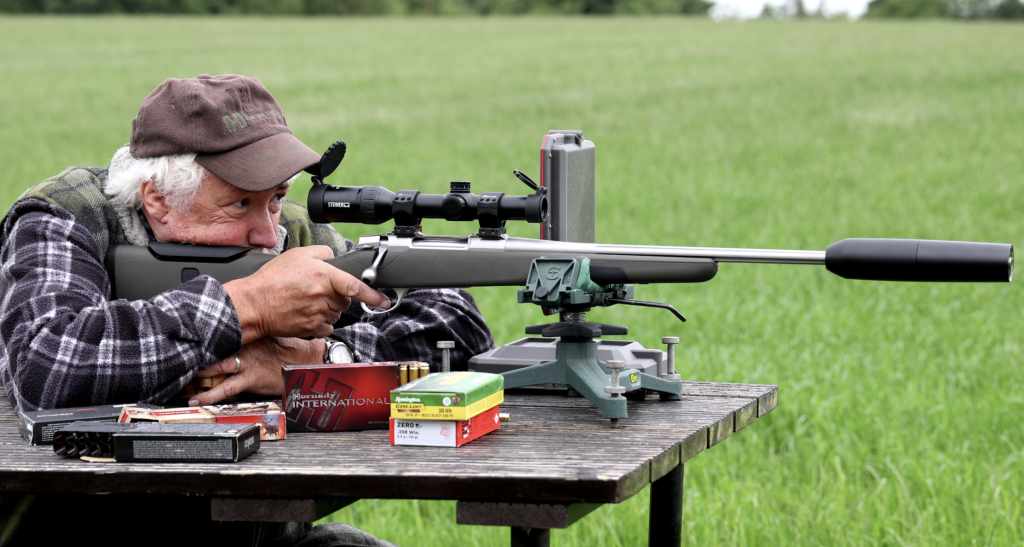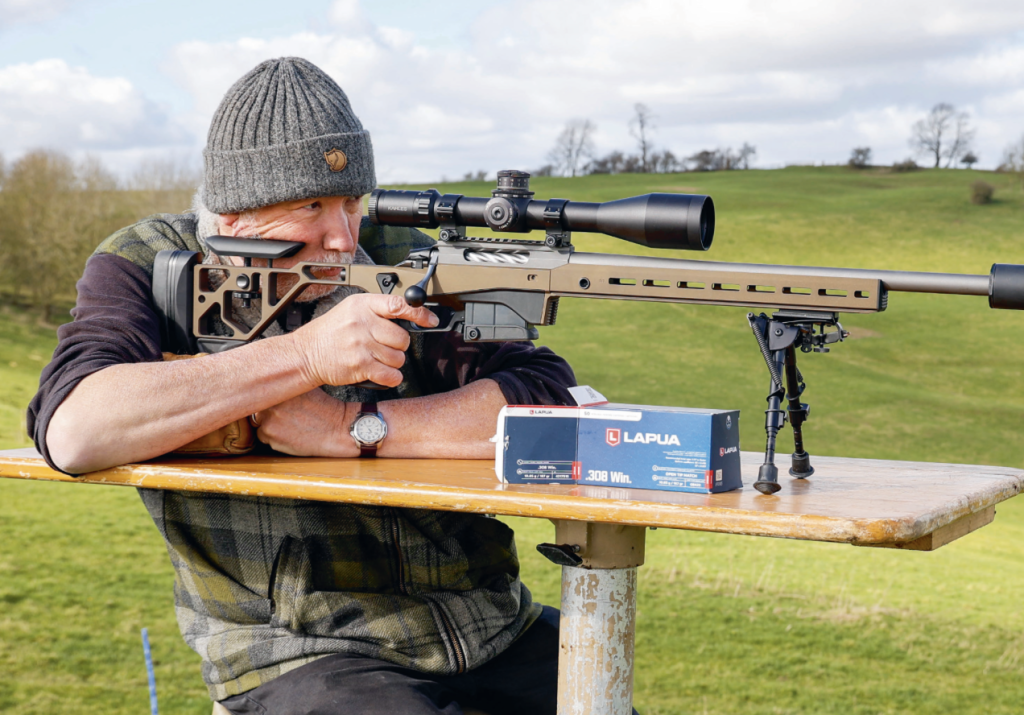Gun test: Accuracy International AXMC in .308
Chris Parkin’s joy at receiving a top-class military rifle to review turns to sadness as he finds it hard to find anything he doesn’t like! Could he have found a truly faultless rifle in the Accuracy International AXMC in .308?

I feel a little spoiled here, reviewing a that is designed to come out of a box/crate/helicopter and work, with no messing, fiddling or delicacy required. It has passed endless testing, far more clinically detailed than any review I can offer, so for a change I can just enjoy shooting a gun that armies have judged has nothing left to prove. I know former soldiers who served with the similar AW rifle (the AXMC is the newer multicalibre/stock update) and still have fond memories of that gun.
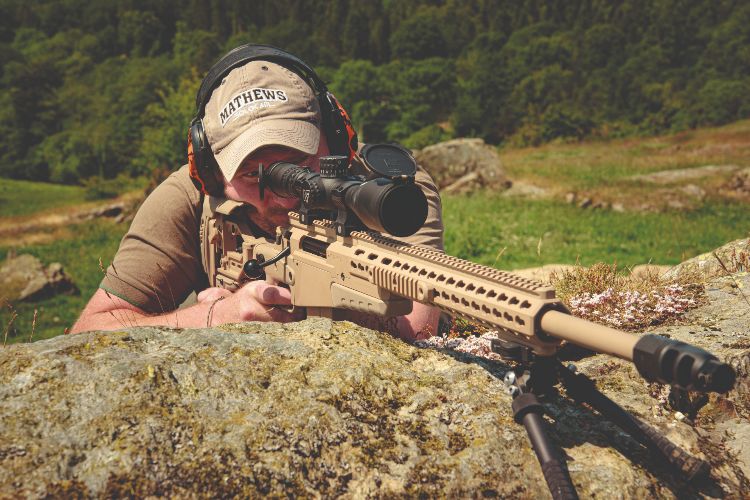
While we are on that topic, let’s discuss the bolt. It’s a six-lug unit, set out in three pairs for a 60° lift. The black polished bolt shaft is punctuated with flutes for debris relief and for its size runs as slickly inside the steel action as anything I have ever encountered. There are no clunky raceways to bind flow and the lugs lock into abutments within the receiver itself. The 25mm knob and excruciatingly neat TIG welded handle is simple, accessible and, due to the low barrel/high cheekpiece, runs rearward under the comb at speed, your head locked in position aligned to the scope, with just fingertip contact.
As I have the similarly specified and qualified Steyr SSG M1 (page 80 in this issue) to hand, I will drop in a few contrasting comments in this article to illustrate some pros and cons judged head-to-head. For example, the Steyr has a shorter bolt stroke, but it’s nothing like as smooth and free running, so don’t always assume a longer bolt stroke is doom and gloom.
 Barrel and brake
Barrel and brake
Back with the AXMC, the 24″/610mm barrel begins with a twin-chamber muzzle brake with six lateral ports. This reduces recoil effectively and has a knurled ring with reverse thread for AI’s moderator, which fits over the top if required. The barrel is a four-groove unit in stainless steel, cut rifled by Accuracy International themselves for this home-grown rifle – one of the few we can call truly our own. The barrel is threaded into the action (AI’s patent pending Quickloc) with a chunky 30mm thread in 1.5mm pitch, and the 39mm long thread is just strong-hand tight in the action, even though spanner flats are machined near the muzzle if required. You can release and swap barrels with just the 4mm Allen key locking clamp on the lower right side of the front action bridge; it takes about a minute to do so.
On this note, all the adjustments on the gun/stock that require an Allen key use the 4mm Allen wrench, which with great attention to detail slots under the adjustable comb with a tiny sprung ball-bearing detent to lock it in position. This is the kind of minute design detail you don’t immediately notice on an AI.
The brake is capable of preventing a mirage band, yet there are just 136mm of barrel showing before it disappears into the octagonal 395mm forend, peppered with Picatinny and Keyslot points for attaching the three included accessory rails (1 x 140mm plain, 2 x 80mm flush cup). I left two on the sides and used one underneath to attach an Atlas bipod, but the choice is yours and I would personally have preferred something with a slightly broader stance to increase aiming precision had I had something suitable.
There is a 150mm polymer handguard with a small barricade stop on its front edge, which doubles as a flat-sided location for a gun clamp if mounted to a tripod. I shot the rifle in this condition and found it very easy to maintain a secure clamped location without any undesirable play. The magazine well is just behind; it uses standard AI twin-column mags and holds 10 rounds. It loads with rounds fed directly in from the top and in the gun; a backup shot will feed smoothly with a single round dropped on top of the follower without needing to be clipped in the mag. The well itself is slightly asymmetric, allowing greater left-side visibility, and the release catch sits between this and the trigger guard, with serration on its rear face for additional grip.
Everything is steel and aluminium apart from the magazine follower and some epoxy. This is required because AI bond the steel action to the aluminium chassis and have done for decades, as it ensures there is no bedding stress or movement of any kind. It can be debonded and rebonded by professionals, but as it doesn’t affect barrel change or access to the trigger hanging below the flat-bottomed receiver, there is no downside and feels reassuring. It’s been well proved in service environments far harsher than anything we civvies ever choose to expose our guns to.
 Trigger and stock
Trigger and stock
The trigger is a two-stage unit with positional adjustability fore/aft to alter the reach from the grip’s throat. It arrived set at 70mm, so I nudged it forward for more comfort. Weight is adjustable from the 1,500g I measured up to 2,000g – don’t forget it’s a military derived rifle and trigger. I liked it. Bare handed or gloved, you can approach the trigger in any conditions without fear of initiating it, maintain confident contact as you squeeze through the first stage and then build pressure up to the point it breaks with no movement or creep, just a crisp click/bang before 10mm of overtravel. The trigger guard is unsurprisingly spacious for gloves and the underslung pistol grip is moulded as part of the stock in two clamshell halves that screw together with flush fitting fasteners around the aluminium spine.
Safety is handled with AI’s usual unit, a three-position wing on the shroud with forward fire, middle safe (locked firing pin) and rearmost for locked bolt too. A cocked action indicator protrudes 7mm from the shroud’s centre for easy tactile reference. Other than that, the bolt is a push-feed unit with a single sprung ejector pin to fling cases clear of the ejection port. A leaf-spring extractor claw clips over case rims with minimal effort and ensures fired cases are easily drawn free. Primary extraction is provided by the bolt handle’s base bearing against the angled rear of the action. I love the AX action; it is strong and simple, yet strangely delicate, with finesse and dexterity available to the operator, along with simple calibre change and/or barrel renewal and a 20 MOA rail for a scope on top.
Continuing rearward, a push button on the left releases the hinge, which when folded locks over the bolt with just 3-4mm clearance and silently latches in place with a metal plunger entering a sprung socket. It opens again with just a firm pull. This back end is all Cerakoted aluminium with complex machining to maintain overall shape, structure, stiffness and strength. The underneath has a Picatinny rail for a monopod and a removable butt hook is supplied.
On the right side there is a butterfly-shaped knob to release the cheekpiece height adjuster to give 24mm vertical travel. This isn’t sprung, which could create accidental noise, but has coarse-grained rubber-like panels bonded to both impinging surfaces to assure grip between the components. The butterfly dial makes it easy to tighten or slacken the junction and shows design experience; it’s so much easier to grip than a circular dial, regardless of knurling. Up top, the comb itself is polymer and offers lateral adjustability across its aluminium carrier. This slim peaked comb fits under your cheekbone without displacing your jaw and, as you all know, I find that critical to long-term firing comfort. It allows level eyed head position behind the optic and won’t transfer recoil or vibration/resonance into the head – not that you get any through this chassis anyway.
Swapping to the left side, there is another butterfly for length of pull, adjustable from 13″/330mm to 14.5″/365mm with detents every 10mm. This enables single control, fast adjustment to suit both shooter and available position. I can imagine how this is relevant to customising the gun on a long day watching over a location, using whatever cover and support is available, yet it is equally helpful for fast overall fit in the civilian world. If you need greater length, two spacers are supplied that will add another 30mm under the recoil pad for taller shooters.
The recoil pad offers vertical and rotary adjustment from a dial below the pad, again featuring rubberised clamping surfaces, so you don’t need to tighten it up very hard for assured lockup. The pad itself is solid, with a slightly angled toe and otherwise rounded surface giving easy access against clothing into the shoulder pocket. There are flush-cup sling-mounting points inlaid into the back end of the stock and similar features in some of the Keyslot add-on rails for the forend, either fitted to the sides or underneath. With the gun folded, the left side is flat for carrying comfort against your back. The bolt knob on the opposite side is totally shrouded and can’t open to allow dirt into the action or a round to drop out.
 And the winner is…
And the winner is…
As can be expected from its worldwide reputation (the AXMC is already in military use with several overseas nations), the rifle delivers. Accuracy and precision are not in doubt and I even considered omitting shot testing with this gun and the Steyr. They both easily deliver 10-round sub-MOA and neither suffered from barrel heating POI drift. Between the two, the AXMC actually lost by 1mm, which is utterly insignificant.
With such reliable platforms I was more attuned to optical performance and bipod stability from varied positions and surfaces. Comparing the two, I must say that for trigger, bolt ergonomics and operation, the AX wins. When loading from the mag the Steyr never missed a beat, but I did have two misfeeds in the AX when reloading super-fast. Recoil and muzzle brakes were a draw, as were stock ergonomics, but I found adjustment easier with AI’s system and the butt hook kept the rifle more stable when reloading and aided fine unsupported elevation control. Accessory availability and adaptability were another draw, with both being superb. The AX’s barrel change is faster and simpler with tools included.
So which wins? The AX is about £2k cheaper and has an easier barrel change. However, the long action, although incredibly smooth, did perhaps tempt a short stroke and misfeed on shorter .308 cartridges – but that was user error and not the gun’s fault. Handling the rifles at speed shows the AX’s slightly lighter weight benefit and I do prefer its folding mechanics. Perhaps the last factor I can differentiate is that although both exhibited equivalent thermal stability from the barrels through long shot strings, the AX’s cut rifled barrel fouled less and cleaned a little more easily in identical circumstances.
The looks and durability of both rifles are appealing but the AXMC would be my preference. It just has a little more je ne sais quoi. And is it really wrong of me to be proud of a home-grown product that has served this country so well? And let’s face it, even the German army bought AWs!
Ammo performance
Ammo: Hornady Match ELD-M
Weight: 168 grains
Stated velocity on the box: 2,700 fps
Average recorded velocity: 2,713 fps
Muzzle energy: 2,746 ft/lbs
100m five-shot group: 17mm/0.65″
Tech specs
Calibres: .308 Win (6.5 Creedmoor, .300 WinMag, .338 Lapua Mag
Overall length: 46”/1170mm (37.75”/960mm folded)
Weight: 13.2lb/6.0kg
Magazine capacity: 10+1
Trigger: Two stages, measured at 1,510g/54oz
Barrel length: 24″/610mm, 22.1mm diameter
Muzzle thread: Accuracy International specific fit
Stock material: Cerakoted aluminium chassis, colding butt
Length of pull: 12.75″/325mm to 15.5″/395mm (including spacers), adjustable pad angle
Cheekpiece: Adjustable lateral and vertical
Bolt knob diameter: 25mm
Bolt handle length: 71mm
Bolt stroke length: 127mm
Bolt lugs: 6, 60° lift
Finish: Pale-brown Cerakote, black, elite sand, flat dark earth, green also available
Three position safety catch: Forward fire, mid safe, rear locked
Scope bases: Integral Picatinny with 20 M.O.A. inclination
Forend: Octagonal with multiple Keyslot locations and Picatinny rail on top
Accessories: Detailed instruction manual, recoil pad spacers included
Options: 20″, 24″, 26″ barrel (6.5 CM and .308 Win), 26″ barrel (.300 WM), 27″ barrel (.338 LM)
Contact
Also used
Nightforce NX8 4-32×50 F1 ZeroStop
www.sportsmanguncentre.co.uk
Hornady 308 MATCH ammunition, 168gr ELD-M
www.edgarbrothers.com
Related Articles
Get the latest news delivered direct to your door
Subscribe to Rifle Shooter
Elevate your shooting experience with a subscription to Rifle Shooter magazine, the UK’s premier publication for dedicated rifle enthusiasts.
Whether you’re a seasoned shot or new to the sport, Rifle Shooter delivers expert insights, in-depth gear reviews and invaluable techniques to enhance your skills. Each bi-monthly issue brings you the latest in deer stalking, foxing, long-range shooting, and international hunting adventures, all crafted by leading experts from Britain and around the world.
By subscribing, you’ll not only save on the retail price but also gain exclusive access to £2 million Public Liability Insurance, covering recreational and professional use of shotguns, rifles, and airguns.
Don’t miss out on the opportunity to join a community of passionate shooters and stay at the forefront of rifle technology and technique.



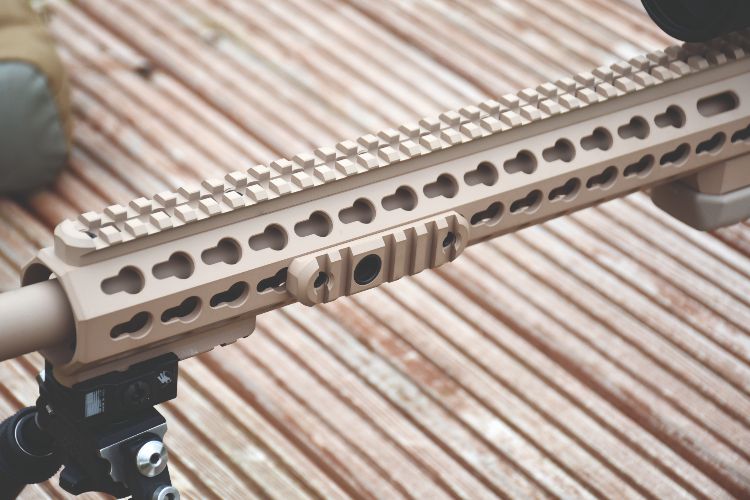 Barrel and brake
Barrel and brake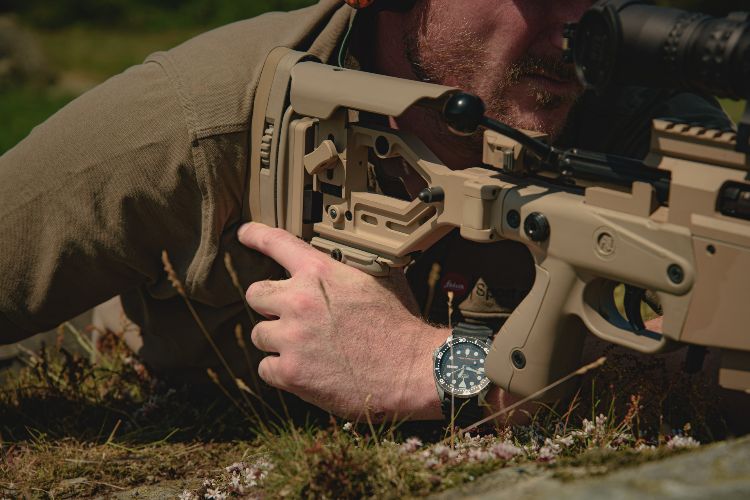 Trigger and stock
Trigger and stock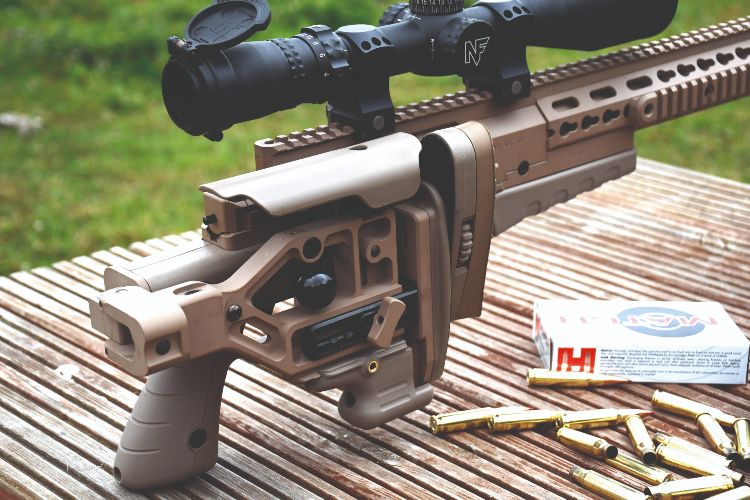 And the winner is…
And the winner is…